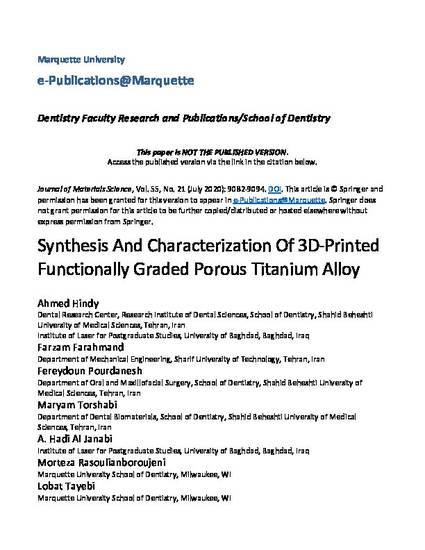
This study aims to 3D print titanium alloy constructs incorporating gradient of porosities, from the fully dense core to the porous outer surface. Gradient porous specimens were prepared using selective laser melting (SLM). Fully dense specimens fabricated by SLM were used as the control group. Characterization of samples was done using X-ray tomography, uniaxial compression testing, and optical and scanning electron microscopes. The biocompatibility of fabricated samples was investigated using human periodontal ligament stem cells via assessment of cell attachment, viability, and proliferation by direct and indirect assays. The data were analyzed using ANOVA and Tukey’s post hoc test. Characterization of constructs reveals interconnected gradient porosities and higher contact angle in porous samples. The introduction of porosity leads to a significant decrease in compression strength. However, Young’s modulus of the samples with gradient porosity was more similar to the natural bone modulus. The surface microstructure consists of loosely bonded spherical particles. Biocompatibility of the dense and porous samples is appropriate. Although the porosity size led to a reduced cell proliferation rate in the gradient sample, the extract of the gradient sample results in more cell proliferation than the dense sample’s extract. The study demonstrates that a biocompatible functionally graded porous titanium structure can be well fabricated by SLM, and this structure leads to a good match of Young’s modulus to that of the bone.
Available at: http://works.bepress.com/fahimeh-tabatabaei/1/
Accepted version. Journal of Materials Science, Vol. 55, No. 21 (July 2020): 9082-9094. DOI. © 2020 Springer. Used with permission.